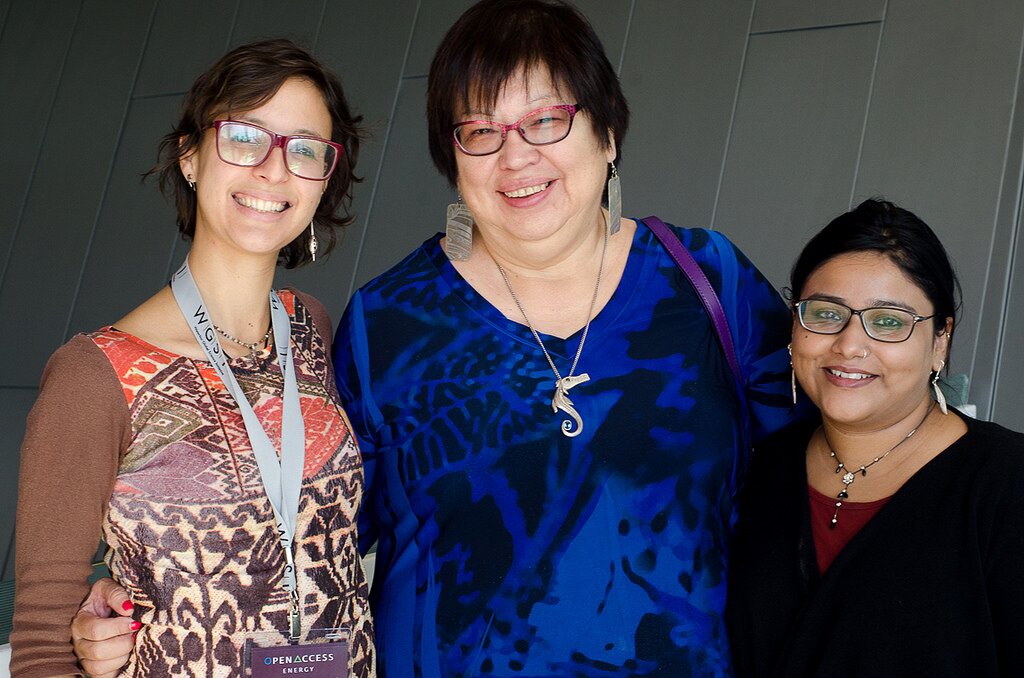Empower women to tackle energy poverty in India
In their role as energy providers across the developing world, women bear the brunt of energy poverty, from gathering firewood to cooking meals on stoves fuelled by animal dung.

Energy poverty has a female face in rural India. Including gender in the conversation is being considered as an effective strategy to develop more locally-based, off-grid energy alternatives, as experts say that women should be at the core of community solutions for a better and cleaner energy supply.
“The burden of energy poverty falls completely on women,” says Aneri Patel, a 30-year-old entrepreneur who worked in India and founded ENVenture, an incubator for local organizations working on clean energy businesses.
Women are the procurers of energy on low-income settlements in rural India, explains Patel. “Whether it is collecting wood for cooking or buying kerosene to light the house, those decisions are typically on women.”
Many households in the countryside villages of populous India operate under the compass of daylight. When the sun is down and nighttime arrives, outdoor and productive activities cease, children stop studying and all social gatherings discontinue.
Rural families rely on firewood, charcoal, “dung-cake” or other traditional biomass to fuel any cooking or heating activities. There is no electricity to run domestic appliances, conserve food or provide light in the house.
Rural energy poverty is a major issue, agrees Kavita Myles, a 31-year-old development professional from Delhi who is working on “eco-village” models, which use renewable energy technologies to generate power.
“When we talk about energy poverty it means that you don’t have a bare subsistence amount to live comfortably and be productive. It’s so insidious; you just don’t have enough to meet basic thresholds,” says Myles, a program coordinator at the Integrated Sustainable Energy and Ecological Development Association (INSEDA). “Nobody is affected more by problems of energy poverty than women are."
In April, both Patel and Myles attended the OpenAccess Energy Summit, hosted by the Waterloo Global Science Initiative (WGSI) in Waterloo, Ont., and shared their views on how women could take part in local strategies to close the gap of energy access in India.
They agree that there’s a strong link among gender, energy and poverty.
Women have taken on the roles of energy providers across the developing world, says Myles. “[But] they’re not acknowledged for that role and it’s a very difficult part to play.”
Recent data reveals that 1.1 billion people worldwide lack access to electricity, 300 million of whom are from India — “by far the highest share of any single country," according to a 2015 report from the Council on Energy, Environment and Water (CEEW).
“It’s about the size of the U.S. population. It’s an enormous challenge and this will be one of the most important development issues that India will have to pursue in the next [few] years to achieve development,” argues Patel.
Similarly, according to the CEEW report, 2.9 billion people in the world rely on traditional biomass, 800 million of whom reside in India — around 65 per cent of India’s population.
Despite 60 years of independence and two decades of post-liberalization, “the situation in terms of energy access remains grim,” states the CEEW report.
“Think of what women have to do to get energy,” describes Myles. Something as simple as collecting firewood requires four to eight hours of searching and gathering just to provide enough wood for two or three days. “They sometimes spend days out collecting wood. That’s not an unusual thing we hear from the women we work with,” adds Myles.

Then there are the dung-cakes. In India, cows have sacred and religious privilege, so cow dung cakes are not seen as impure or dirty. “But imagine doing these cakes with bare hands. It’s so highly inefficient with so much smoke. There’s even a danger of getting illnesses from that, no matter how holy an animal is,” explains Myles.
Breathing dirty fumes from these traditional sources of energy is also a huge concern with serious health consequences — like respiratory disorders — for women and children who are often exposed to indoor smoke.
Myles explains that about 1.5 million women die every year in India from inhaling smoke from stoves. “Making food is an act of love, but it’s killing the women and the children, especially girls, who spend most of the time with their mothers. People are relying on their own ingenuity and on their own traditional systems that are heavy carbon emitters.”
If India wishes to address its energy-poor, the country should consider boosting off-grid solutions, such as solar lanterns, solar home systems or decentralized renewable energy, that are low-cost and can adapt to local contexts and the needs of communities.
